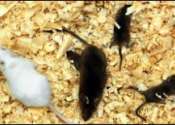A guppy's spots formed by layers of color cells
At least three pigment cell types from multiple layers of skin contribute to the color patterns of male guppies, according to a study published in PLOS ONE on January 22, 2014 by Verena Kottler from the Max Planck Institute ...







